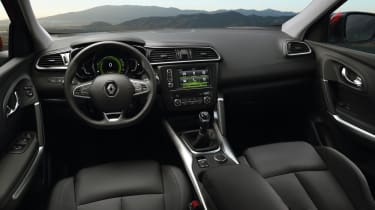Renault Kadjar 4x4 diesel review
Does the Renault Kadjar crossover make more or less sense with 4x4 underpinnings and a modicum of off-road ability?

The Renault Kadjar is a great family car for those who are looking for something a little more interesting than a normal hatchback. We think that it could well be the best crossover available right now, and although the 1.6-litre diesel all-wheel-drive model won’t be the biggest seller, it does provide added depth to the range with specific appeal to those who plan to tow or even venture off-road.
The Renault Kadjar is the company’s answer to the Nissan Qashqai, with which it shares many of its parts. And just like its sister car, the Kadjar is available with all-wheel drive for those after a cool-looking motor with decent towing capability and a modicum of off-road ability.
We’ve already tested the 1.2-litre petrol Kadjar in Issue 1,374, and were mightily impressed. On the whole the crossover is comfortable, very practical, drives well and looks stylish. It’s relaxing to travel in, too, bar a bit of wind whistle from the A-pillars, slight engine noise under acceleration and a little tyre roar on rough surfaces – which is less noticeable on the smaller 17-inch alloys of the lower-spec Dynamic Nav tested here.
• Best SUVs and 4x4s to buy now
This all-wheel-drive model also features the range-topping 128bhp 1.6-litre diesel. It provides substantially more pulling power than the petrol, making it a better choice for high-mileage drivers, with 320Nm of torque available from only 1,750rpm. It provides good in-gear punch, taking the strain out of overtaking at motorway speeds, and the extra grunt means it can tow a trailer of up to 1,800kg – that’s 300kg more than the petrol. When worked hard the engine does emit that tell-tale diesel rattle, but it quietens down when cruising.
Our test car’s all-wheel-drive system – which is available only with the 1.6-litre dCi – can send up to 50 per cent of the power to the rear wheels when the fronts start to slip, or you can lock it in 4x4 mode at lower speeds. We tried the car on a very mild off-road route and only ever saw a maximum of 10 per cent of the power transferred to the rear wheels on the on-board computer.
And this highlights a key point: few people will ever need the extra grip over the front-wheel-drive car. For starters, the 4WD costs £1,500 more and economy drops from 62.8mpg to 57.6mpg. Also, it’s one second slower from 0-62mph at 11 seconds, due to the extra weight. Really, though, sprint times are less relevant for this type of car. Engine flexibility is key and, although we’ve yet to test it, we expect the 74.3mpg 1.5-litre diesel will be punchy enough for most people – and it offers a further £1,200 saving.








